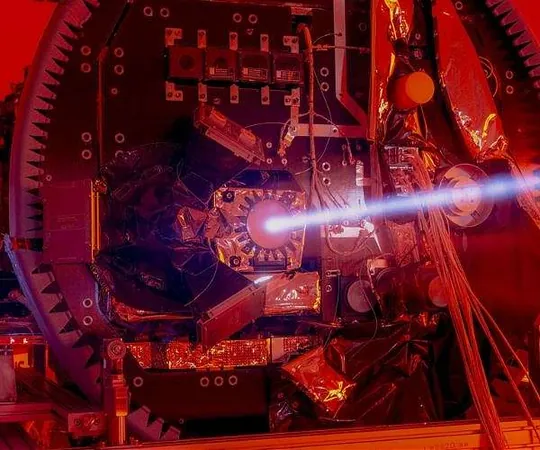
The Innovative Proba-3 Mission: Precision Laser Calibration for Awe-Inspiring Artificial Solar Eclipses
2024-11-24
Author: Emma
Introduction
In an exciting development for space exploration and solar observation, the European Space Agency (ESA) is gearing up to launch its Proba-3 mission on December 4, 2024, from India. This groundbreaking initiative is set to achieve the remarkable feat of creating artificial solar eclipses on demand, allowing scientists to study solar phenomena in unprecedented detail.
Mission Overview
Proba-3 comprises a pair of spacecraft—named the Occulter and the Coronagraph—which will fly in formation about 150 meters apart. The coordination between these two spacecraft is crucial, as it enables the Occulter to cast a shadow over the Coronagraph for up to six hours. This carefully orchestrated alignment will block out sunlight and reveal the solar corona, the sun's outer atmosphere, providing vital data for scientific research.
Precision Alignment Technology
At the heart of this mission lies an advanced laser metrology system that ensures exceptional precision in maintaining the alignment of the spacecraft. During ground tests conducted in February, a laser beam was fired from the Occulter to a retroreflector on the Coronagraph, achieving astonishing positional accuracy down to a single millimeter. This precision is further enhanced by utilizing other technologies, such as inter-satellite radio links and visual imaging systems.
Importance of Shadow Position Sensors
The Shadow Position Sensors positioned around the coronagraph aperture play a vital role in maintaining the correct placement of the shadow cast by the Occulter. This technology is essential not only for the mission's scientific success but also for enhancing our understanding of solar dynamics—a field that has far-reaching implications for space weather forecasting and climate science.
International Collaboration
Proba-3 is a testament to international collaboration, bringing together expertise from 29 companies across 14 countries. The spacecraft’s platform was designed by Airbus Defence and Space in Spain, with assembly led by Redwire in Belgium. Notably, the mission is spearheaded by Spain's SENER and features key contributions from organizations like Belgium's Centre Spatial de Liège and GMV, which developed the formation flying subsystems.
Launch Logistics
The Proba-3 mission is set to launch aboard the Indian PSLV-XL rocket, operated by the Indian Space Research Organisation (ISRO). This exciting venture not only represents a significant leap in solar research but also underscores the importance of global partnerships in advancing space exploration.
Conclusion
Stay tuned for updates and insights from the mission by following the Proba-3 blog at blogs.esa.int/proba-3, where you can track the latest developments and delve deeper into the science behind this extraordinary endeavor. Don't miss the opportunity to witness a new era of solar observation that promises to illuminate our understanding of the universe!









 Brasil (PT)
Brasil (PT)
 Canada (EN)
Canada (EN)
 Chile (ES)
Chile (ES)
 España (ES)
España (ES)
 France (FR)
France (FR)
 Hong Kong (EN)
Hong Kong (EN)
 Italia (IT)
Italia (IT)
 日本 (JA)
日本 (JA)
 Magyarország (HU)
Magyarország (HU)
 Norge (NO)
Norge (NO)
 Polska (PL)
Polska (PL)
 Schweiz (DE)
Schweiz (DE)
 Singapore (EN)
Singapore (EN)
 Sverige (SV)
Sverige (SV)
 Suomi (FI)
Suomi (FI)
 Türkiye (TR)
Türkiye (TR)